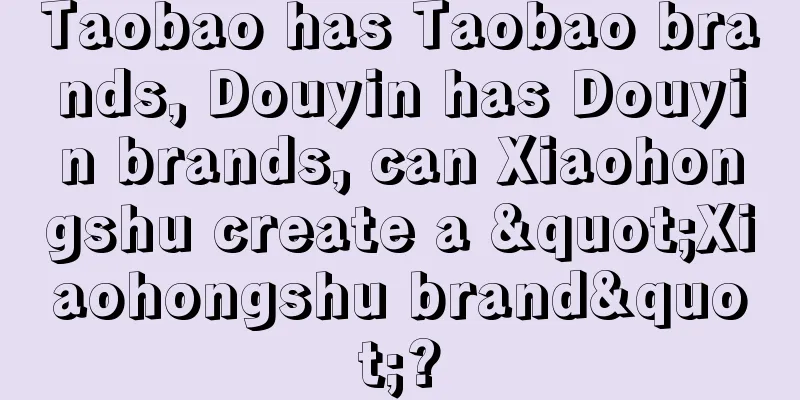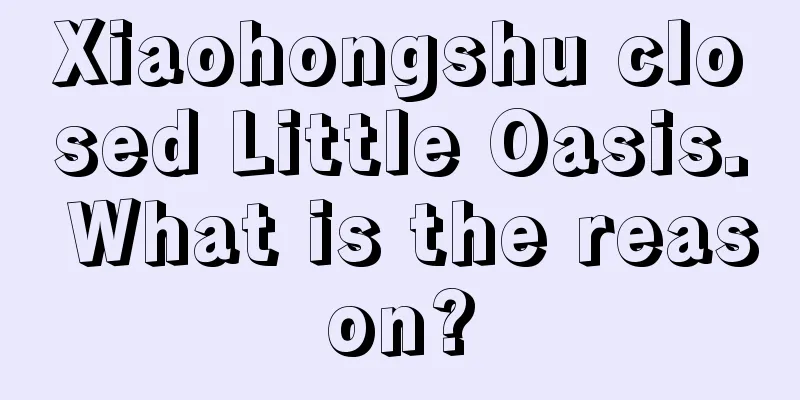MINISO, addicted to collaborations, has turned itself into a "toy store"

"A global value retailer that offers a wide range of trendy lifestyle home products featuring IP design." This is how MINISO introduced itself in its financial report. After going through the changes in stereotypes such as "10-yuan store", "beauty store", "grocery store", "fake Japanese goods", etc., MINISO now seems to have clarified its positioning: to make IP derivatives. The results of this route have also been initially verified. Chiikawa, Loopy, Sanrio, Pixar, Barbie... each joint market performance is not bad, and flash events have been held in many cities, allowing these peripherals to continue to go viral in a carnival-like manner. MINISO mentioned in its semi-annual report that the company's licensing fees in the first half of the year reached 183 million yuan, a year-on-year increase of 24.2%. Controversy ensued. The company's ability to obtain IP licenses was widely recognized, and its current business model was more traffic-intensive than previous versions. However, there were constant voices questioning MINISO's poor quality control, slightly high prices, and unreasonable flash event operations. Although it already had the trendy toy brand TopToy, and it was not the first time it tried IP collaboration, MINISO still gave people the impression of "stumbling in the toy business." 01In the past, when you stepped into MINISO, you might think it was a sundry department store where you could pick up something for 9.9 yuan or 19.9 yuan. But now, MINISO has quietly transformed itself into a "toy store." The most conspicuous place at the entrance is where the hottest co-branded peripherals are placed. Several large walls are filled with dolls of Strawberry Bear, Chiikawa, Winnie the Pooh, and Loopy. In the middle shelves, you can also find IP co-branded daily necessities, such as face towels, stationery, etc. MINISO located in Joy City Chaoyang, Beijing/Photo by Zhiwei (Note: "China MINISO" is also one of the business formats of MINISO. The clerk confirmed to us that "it is MINISO, there is no difference") Obviously, MINISO is not only doing 1+1 IP collaboration, but is also trying to IPize its own products. The effect is also remarkable. Take the joint venture between MINISO and the popular IP "chiikawa" as an example. The joint products were officially launched at the end of March this year, and MINISO began to do theme flash events across the country. The first stop was Shanghai Jing'an Joy City. According to the official website of the Shanghai Jing'an District People's Government, the sales amount of the flash event reached 2.68 million yuan within 10 hours on the first day, setting a record for the highest single-day sales of the Jing'an Joy City IP exhibition. On the day when online reservations were opened, the number of visits reached 1 million by 18:00, which was also the historical peak of visits to the Shanghai Jing'an Joy City Mini Program. As of April 17, the Chiikawa theme flash store in Jing'an Joy City had sales of 20 million yuan in 20 days. The popularity of Weibo hot searches and discussions on social platforms continued to rise. It was hard to say whether this was the strength of Chiikawa or the strength of MINISO. At the end of August, the pop-up event came to Beijing Heshenghui again. Consumers shouted on social platforms, "I can't enter the reservation app", "It's full, I can't make an appointment", "Many models are sold out", and even a whiteboard was set up at the door of the pop-up store, updating the peripherals that are insufficient and sold out every day. Make an appointment with the mini program first, and then queue up to redeem the reservation voucher when you arrive. After getting the number, you have to queue up in person to wait for entry. According to netizens, it takes 30 minutes to queue up just to redeem the voucher, not to mention waiting to enter, "and there is a section of the queue that has to be outdoors." Image source: Xiaohongshu The Chiikawa flash mob has just passed, and MINISO has once again collaborated with the domestic IP Little Bear Bug and set up a booth in the atrium of Hopson. This flash mob is definitely not as popular as Chiikawa. No reservation is required in advance, but you need to scan the code to add MINISO's corporate WeChat before entering. This has also been questioned on social media platforms, with some netizens saying that MINISO is excessively collecting user information. No data has yet been released on specific sales, but from posts posted by netizens and Zhiwei's experience at the site, although the IPs such as Loopy, Chiikawa, and Pixar are not as popular, the peripherals related to the popular character "A Cockroach" in the Bearworm comics are often out of stock, and A Cockroach's peripherals are also one of the most discussed characters by netizens. Beijing Heshenghui Bearworm XMiniso flash mob/Photo by Zhiwei Not long ago, MINISO opened its largest store in the world in Indonesia, covering an area of 3,000 square meters and featuring more than 3,000 IP co-branded SKUs. This means that there is at least one IP co-branded product per square meter, which shows MINISO's determination. If we count the successful IP joint developments of MINISO in the past one or two years, the characteristics are very obvious: buy the hottest ones and make the fastest and largest ones. Buy the hottest ones, that is, MINISO basically prefers the most popular IPs, and has a more accurate control over the discussion heat of the IP market. For example, Disney, Hello Kitty, etc. represent normalized popular IPs, which have audiences no matter what, and basically have no possibility of failure. However, Loopy, Chiikawa, and the upcoming Senbeier, are all popular on the Internet, and are mostly known in the form of emoticons, overseas content, etc. MINISO can also step on the trend of such popular IPs, which shows that its style in IP co-branding is relatively bold. The fastest and most common example is the collaboration with the movie "Barbie" last year. MINISO produced more than 120 SKUs around this IP, covering 12 categories, and released them within half a month during the movie's release period, and sold them simultaneously in China and the United States. At the Investor Day in January this year, MINISO expressed its vision with great confidence: "To become the world's number one IP design retail group." 02There is a widely circulated story. In 2018, Ye Guofu, the founder of MINISO, went to the United States to discuss copyright cooperation with Marvel. He gave four PPT presentations in the morning and finally made the other party agree after much effort, saying that they were "willing to seriously consider it." Then Ye Guofu left an employee in Los Angeles and asked him to visit Disney two or three times a week to discuss the details, and finally won the copyright. Why do we have to put so much effort into IP collaboration? On the one hand, MINISO seems to have to transform. As of June 30, 2024, MINISO has 6,868 stores worldwide, including 4,115 in mainland China and 2,753 overseas. Compared with stores of the same type, MINISO is relatively ahead in both the number of stores and the pace of going overseas. However, this is also where Miniso is embarrassed. Its model is similar to Japanese general merchandise stores such as KKV and Greenparty, but it is inevitably compared with trendy toy brands such as Pop Mart. Although Miniso also has TopToy, which specializes in trendy toys, Miniso has also been heavily involved in the IP business under its main brand, and many IPs are similar, so it has to be involved in the comparison. Miniso, which is between the two models, will also be challenged by two groups of peers. "Miniso's turnaround and transformation should have started before the epidemic. On the one hand, it faced challenges from strong IP formats like Pop Mart, and on the other hand, it faced close combat from large and comprehensive competitors like KKV." Zhuang Shuai, founder of Bailian Consulting and retail e-commerce expert, told Zhiwei. Therefore, we can only do it well. Basic categories such as daily beauty products with low unit prices are the moat of MINISO. It is impossible to do more with these products. After all, price increases will damage the brand, and reducing SKUs is to give up the advantage. The only incremental increase is the premium brought by IP co-branding. Daily sundries and food are low-profit commodities, but they cover a wider range of people. IP co-branding is a high-profit product, which is used to increase profits and ensure the basic revenue structure of MINISO. On the other hand, IP collaboration can increase the average order value for MINISO and tap into groups with greater purchasing power, who are different from those who consume low-priced daily necessities. According to MINISO's financial report, the average customer unit price of MINISO stores in China was RMB 37.6 in the year ending June 30, 2023, and the average customer unit price remained at this figure in the second half of 2023, without any increase. Looking at this year's semi-annual report, MINISO's customer unit price rose to RMB 38.5 in the first half of this year. The increase in average customer spending of nearly one yuan may be closely related to the great success of a series of IP joint ventures such as "Barbie" last year. Because the prices of MINISO's general products are basically constant, the only thing that can bring high average customer spending is the increase in SKUs and the slightly premium products of IP joint ventures. MINISO's average customer spending is rising step by step. In contrast, TopToy, a vertically trendy toy subsidiary, has seen its average customer spending decline. As of the first half of 2024, TopToy's average customer spending was 111.2 yuan, compared with 124.7 yuan in the same period last year. Blind boxes that cost 50 or 60 yuan and trendy toys that cost hundreds of yuan seem to be showing signs of fatigue. The idea of MINISO's transformation is to continue to do IP co-branding at a relatively cheap price. The price of trendy toys can be set at only 20 or 30 yuan. For example, the most expensive price of MINISO's own Pixar blind box is only 59 yuan, and the cheapest is 39 yuan, or even a flash sale price of more than 20 yuan. What's more, the category is not limited to trendy toys. Printing IP patterns on general daily necessities can also reap the fan bonus of IP without raising the price too much. It is worth noting that MINISO always needs brand power. From the "copycat" of the past to the "white label" later, although MINISO has long washed away the stereotypes of "cheap" and "imitation", as a brand, the four words MINISO are still not so recognized. Until now, there are still many fans who put the peripherals made by MINISO at the bottom of the contempt chain. A netizen commented sharply on the joint name of Chiikawa: "People who have no money buy MINISO's ugly dolls. If you have money, why don't you buy a few Riku?" Therefore, absorbing a large number of external IPs can help MINISO to fill the gap in brand power to a certain extent. Even if the products produced by "MINISO" are not so recognized, if "MINISO X XXX IP" continues to be successful, it will also be a source of pride. 03Miniso's joint venture was described as an "ugly doll", and it was not wrong. A relevant practitioner told Zhiwei that Miniso's Chiikawa was popular, but "the quality control was not good." How bad is the quality control? On the social platform, Chiikawa's fans said that they went to Miniso to pick the best products and didn't want to buy anything in the end, "I feel like my baby has eaten Sanlu milk powder" (big fingers and thick neck). Zhiwei also saw in several MINISO stores that for the same character and the same category, for example, a keychain of Hachi (a character in Chiikawa), almost every one looked different. Some had less cotton filling and were thinner, some had heads so big that they were connected to the body, and some had irregular shapes with a flat left face and a fat right face. In the store, choosing faces is indeed a technical job. Zhiwei also saw consumers standing by the shelves and comparing them one by one, selecting four dolls with good faces, taking them aside to continue comparing, and finally buying the one that looked the most restored. A consumer who bought a Xiao Ba keychain told Zhiwei that the Xiao Ba she carefully selected "was not 100% restored, so she went home and pinched the face to save it." The above and middle pictures are the real Xiaoba pendants in the MINISO store/Photo by Zhiwei The picture below is a screenshot of the anime "Chiikawa". The one on the right is Xiao Ba Netizens commented on MINISO's quality control/Photo source: Xiaohongshu IP joint business is sexy but dangerous. Not only is quality control difficult to grasp, but now Miniso's competitors are also increasing rapidly. Ben (pseudonym), a practitioner in the trendy toy industry, told Zhiwei that this is no longer surprising in the industry. Miniso and Greenparty are both doing Guogu, which means "making millet in the way of a 10-yuan store." Greenparty also opened a super-large store in Chengdu. It changed the conventional store model that mainly sells daily necessities and groceries, and instead used millet as the main product. It also has its own IP co-branded daily necessities and even a makeup area for consumers to experience. Ben said that this business model may be the trend of the future, and more players will join the game. In other words, all boundaries are broken, and a large and comprehensive model that covers all consumer groups is the most resistant to risks. "General consumers may just buy a hairpin, but Sanrio fans will only buy Sanrio co-branded hairpins. So under this model, people who need to buy sundries will still buy them, and by the way, IP fans will be developed." As the number of competitors increases, everyone is doing joint ventures with the same IP, which will lead to homogenization and aesthetic fatigue among consumers. The uniqueness and scarcity of the IP will no longer exist. The joint venture, which was originally a "limited" product, has finally developed into a normal commodity, which has little value in promoting activation and attracting new customers. In addition, multiple companies competing on the same stage are like writing essays around an IP, and in the end it all comes down to who has the better design, the more cost-effective price, and the more aggressive marketing. In either case, the dividends brought by IP co-branding are far less than they are now. "Some IPs have relatively low costs in the early stages, and the costs of self-created IPs are also relatively low. Different IPs have different cooperation models. Some are one-time buyout licensing models, some are time-limited licensing models, and some are licensing for specific categories. The cost structure is generally quite complex," Zhuang Shuai also said. IP cooperation requires time and money, as well as aesthetic ability and investment logic. Zhuang Shuai added that the compatibility between IP and category is also a very interesting point. "This is a big challenge, because different IPs have different audiences, and what kind of categories these audiences will consume is something that needs to be considered." Moreover, as mentioned above, different cooperation models will bring different cost structures. Zhuang Shuai said, "Then how to balance pricing with the acceptance and spending power of the target group requires careful calculation." Furthermore, the ability to establish a membership operation system is also very important. "Whether it is through points, membership activities, or the establishment of a second-hand goods community among members, these are all tests of operational capabilities and are also the focus of competition for companies of the same size as MINISO." What cannot be ignored is that IP co-branding will bring unexpected profits when the IP is hottest, but it will also become a slow-selling product after the heat fades. MINISO is good at digging out IPs that are not so mainstream but popular enough from the Internet, but the life cycle of these IPs is often not as good as some mainstream IPs. Perhaps one of the tasks left for Miniso is to continuously and without fail bet on every phenomenal IP. Written by: Zhou Zhou Editor: Da Bing |
<<: Simba fights three sheep, tearing open the "underpants" of the live e-commerce supply chain
>>: What exactly are we talking about when we talk about brand personification?
Recommend
Focus on e-commerce promotion and delivery capabilities offline, Chengfeng fully open
As e-commerce platforms continue to evolve, Xiaoho...
6 recent favorite cases
This article mainly introduces six brand cases tha...
Is Amazon's payment cycle fixed? When will the payment be returned?
Merchants who have done e-commerce know that the p...
What should I do if Amazon has no traffic after the new product period?
On Amazon, the best time to get traffic is when ne...
How does Amazon ship large items? What are the charges for large items?
With the increasing popularity of online shopping,...
What is the difference between selling on Amazon and operating on Amazon?
Amazon is the world's largest cross-border e-c...
Young people don’t like to drink liquor. How can liquor brands break through the bottleneck by looking at Moutai?
Moutai Group sees youth as the key to the liquor i...
How can I place an order on Amazon? How long does it take for a new store to place an order?
As more and more sellers open stores on Amazon, it...
After reviewing our 60-day startup, we have learned three things:
In a highly competitive business environment, how ...
How to check fuel surcharge on DHL official website? How to charge?
Foreign trade business generally involves shipping...
Private domain digital development under the WeChat ecosystem of banking enterprises
More and more companies are beginning to use WeCha...
With 3 million followers in 30 days, Douyin's science popularization track has ushered in "new hope"
Due to various difficulties, the science populariz...
What courier does Amazon use for direct mail? How to operate Amazon?
Amazon is the largest cross-border e-commerce plat...
Sincere summary: five steps to cultivate high-level data analysis capabilities
Introduction: This article briefly describes the m...
Breaking out of the Red Ocean | Good content drives new brand growth
This article uses ten sentences and ten case studi...
![E-commerce merchants selling goods on Xiaohongshu [New Front]](/upload/images/67e6f3b28bea1.webp)








